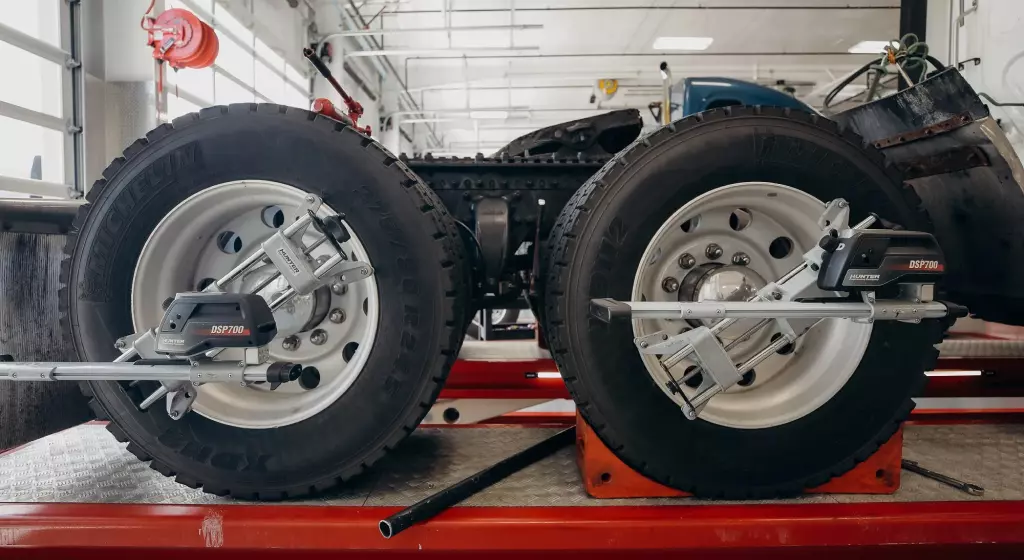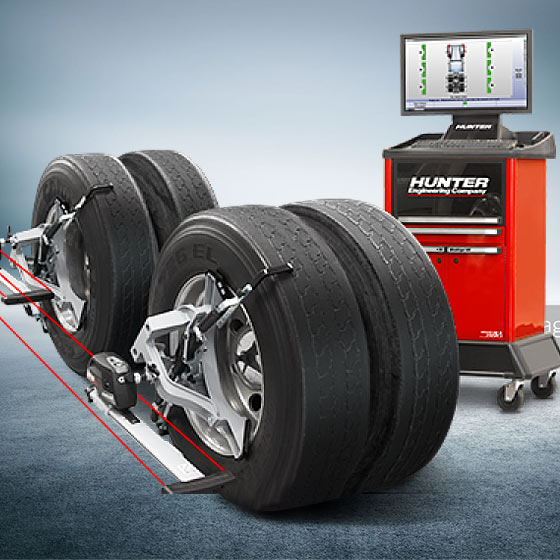Proper alignment of vehicles is crucial for avoiding irregular tire wear and keeping drivers happy. If vehicles veer left or right, the tires will wear unevenly and quickly, leading to premature tire removals. With the average cost of a commercial truck tire at around $500, maximizing tire removal miles is essential.
The impact of poor alignment on the driver is often overlooked. If the driver has to struggle with the steering to maintain a straight course, they will become dissatisfied and demand a new vehicle. Given the current shortage of qualified drivers, fleets with poorly maintained or misaligned vehicles will struggle to retain drivers.
Aligning every tractor and trailer is a time-consuming and expensive process, so when should a fleet consider alignment? Some fleets align their vehicles based on mileage or age of the tractor/trailer, while others only align when tire wear is irregular. However, avoiding alignment altogether can be a costly mistake in the long run.
What is Proper Truck Alignment?
Proper vehicle alignment is crucial for ensuring that tires do not develop irregular wear and that drivers can steer straight. However, fleet managers often argue that trailers can force perfectly aligned tractors out of alignment. This can lead to tire wear issues and unhappy drivers.
For fleets that recognize the importance of proper alignment, reproducibility of alignment results is a key consideration. Different alignment companies have various procedures for determining thrust, toe, camber, and caster angles, and the skill level of technicians can also affect results. Equipment calibration is also crucial for ensuring reproducible results.

To choose the right alignment company, fleets should visit various shops and ask about the system used, technician experience, and frequency of equipment calibration. Asking other fleets about their experiences with the alignment shop can also provide valuable insights. Don’t neglect vehicle alignment – it’s important for both your tires and your drivers.
Common wear conditions
Proper tire alignment is crucial to maximize tire removal miles and prevent irregular and uneven wear. It’s important to understand common wear conditions to identify and address alignment issues.
Toe-in and toe-out conditions are easy to spot on steer tires, causing full shoulder wear and side scrubbing. Feather wear, with high to low rib wear on each tread, is a common condition for steer tires due to too much toe on the steer axle or drive axle misalignment.
For drive tires, rapid shoulder wear on one of two duals may be attributed to negative camber or uneven inflation pressure. Rapid shoulder wear on both drive tire shoulders is not an alignment issue, but is caused by running light loads.
Fleet managers can refer to the “Radial Tire Conditions Analysis Guide” published by the TMC of the American Trucking Associations for information on various wear conditions and their root causes.
At our shop, we use specialized Hunter alignment tools for truck alignment. Our mechanics are equipped to address alignment issues and provide reliable solutions. Feel free to visit us or request our services within a 50-mile radius.
